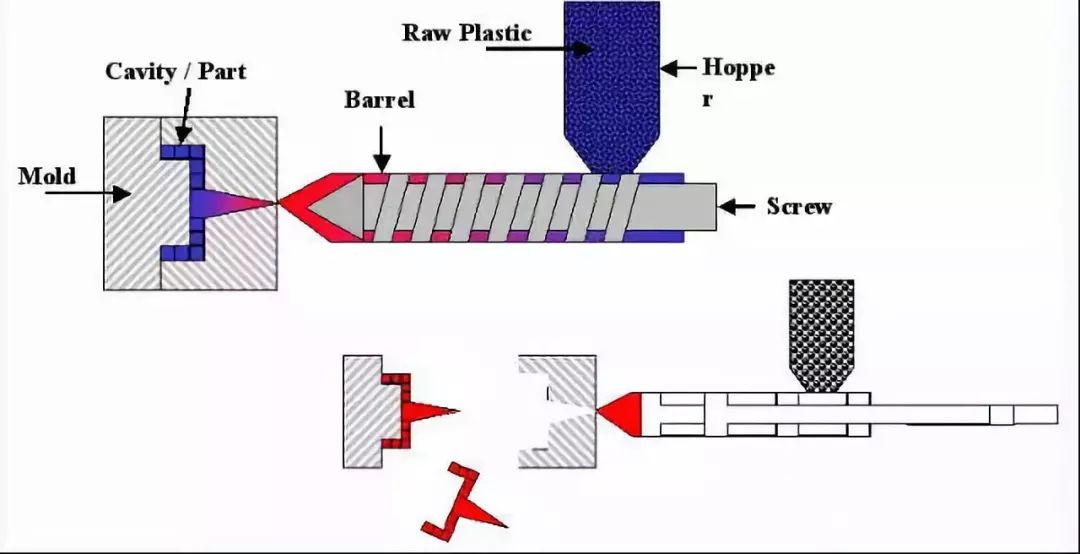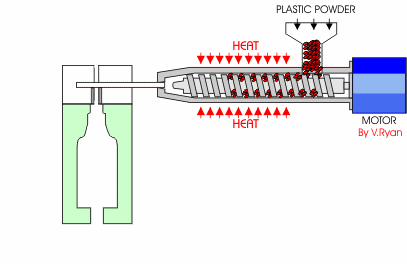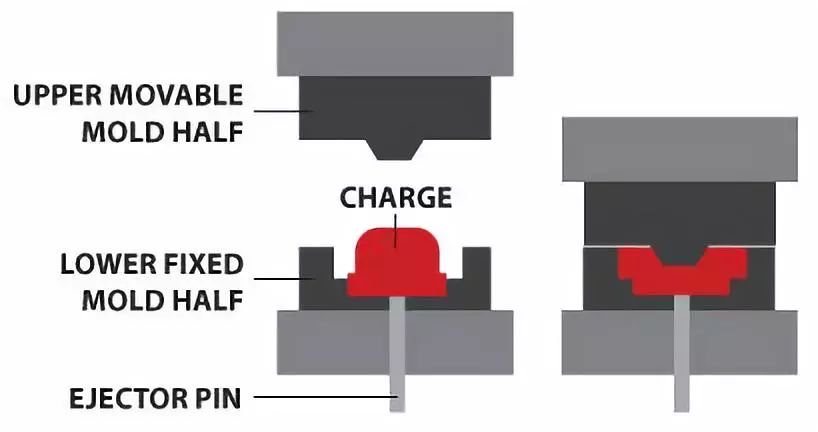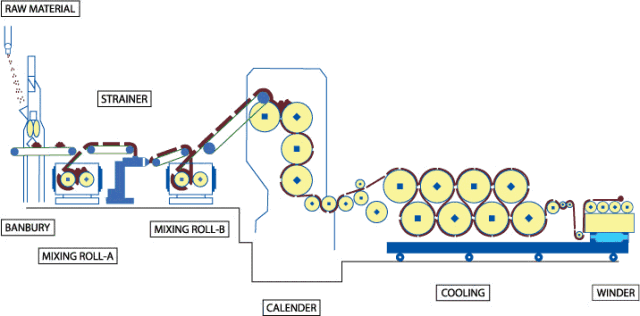The molding process is one of the most basic production processes for each packaging product. Plastic, a polymer, has various molding processes.
Injection Molding

Injection molding is a manufacturing method that makes parts by injecting material into a mold. The main method of processing plastics is injection molding. In this process, the plastic is placed into the hopper, and then the hopper heats the plastic into it, which is pushed through a long chamber with a reciprocating screw. After that, it is softened into a fluid state. A nozzle is located at the end of the chamber through which the fluid plastic is forced to cool, closing the mold. When the plastic cools and solidifies, the semi-finished product exits the press.

Plastic Extrusion

Plastic extrusion is a high-volume manufacturing method in which plastic raw material is melted to form a continuous profile. The extrusion process is commonly used to manufacture materials such as films, continuous sheets, tubes, profiles, rods, jacketed filaments, filaments, wires, and cables. Along with the injection molding machine, the dried plastic is placed into a hopper and fed into a long heating chamber. At the end of the chamber, the material is pressed out of a small opening, or mold, in the shape of the desired final product. After the plastic leaves the mold, it is placed on a conveyor belt to cool. A blower is sometimes used during this process to help cool it down.
Blow Molding

Blow molding is a molding method for manufacturing hollow plastic products. It is a secondary molding technology that uses gas pressure to inflate a rubber-like parison closed in a mold cavity into a hollow product.
Thermoforming

A relatively special plastic processing method for processing thermoplastic sheets into various products. The sheet is clamped on the frame and heated to a softened state, and under the action of external force, it is made close to the profile of the mold to obtain a shape similar to the profile. After cooling and shaping, the finished product is finished. This process is also used in rubber processing. In recent years, thermoforming has made new progress, such as continuous production technology from extruded sheet to thermoforming
Compression Molding

Compression molding is the most common method used in thermosets and is generally not used for thermoplastics. During this process, the material is extruded into the desired shape. Plastic molding powders and other materials are added to the mix to create special qualities. When the mold is closed and heated, the material hardens into its desired shape. The temperature, pressure and length of time used in the process depend on the desired results.
Calendering

Also called calendering. The final process of heavy leather finishing. The finishing process of flattening the surface of the fabric or rolling out parallel fine diagonal lines by the plasticity of the fibers under the condition of mixing heat to improve the luster of the fabric. After the material is fed, it is heated and melted, then formed into sheets or films, which are then cooled and rolled up. The most commonly used calendering material is polyvinyl chloride.
Pultrusion
Extrusion molding, the blank is extruded from the orifice or gap of the die under the action of three-way uneven compressive stress to reduce the cross-sectional area and increase the length to become the desired product. The processing method is called extrusion. This processing of the blank It's called extrusion.
Vacuum Forming
Vacuum forming is often called blister, which is a plastic processing technology. The main principle is that after heating and softening the flat plastic hard sheet, vacuum is used to adsorb it on the surface of the mold, and it is formed after cooling. It is widely used in plastic packaging, lighting, advertising , decoration and other industries.
Rotational Molding
Also known as rotational molding, rotational molding, rotational molding, rotational casting, rotational molding, etc. The rotational molding process is to first add plastic raw materials into the mold, and then the mold is continuously rotated along two vertical axes and heated, so that the plastic raw materials in the mold are gradually and uniformly coated, melted and adhered to the mold under the action of gravity and thermal energy. The entire surface of the mold cavity is formed into the desired shape, and then cooled to shape, demolded, and finally the product is obtained.
Huihong packaging has been escorting you, from product opening, production and processing to transportation integrated service system, welcome to negotiate!
 online service
online serviceScan to wechat :
